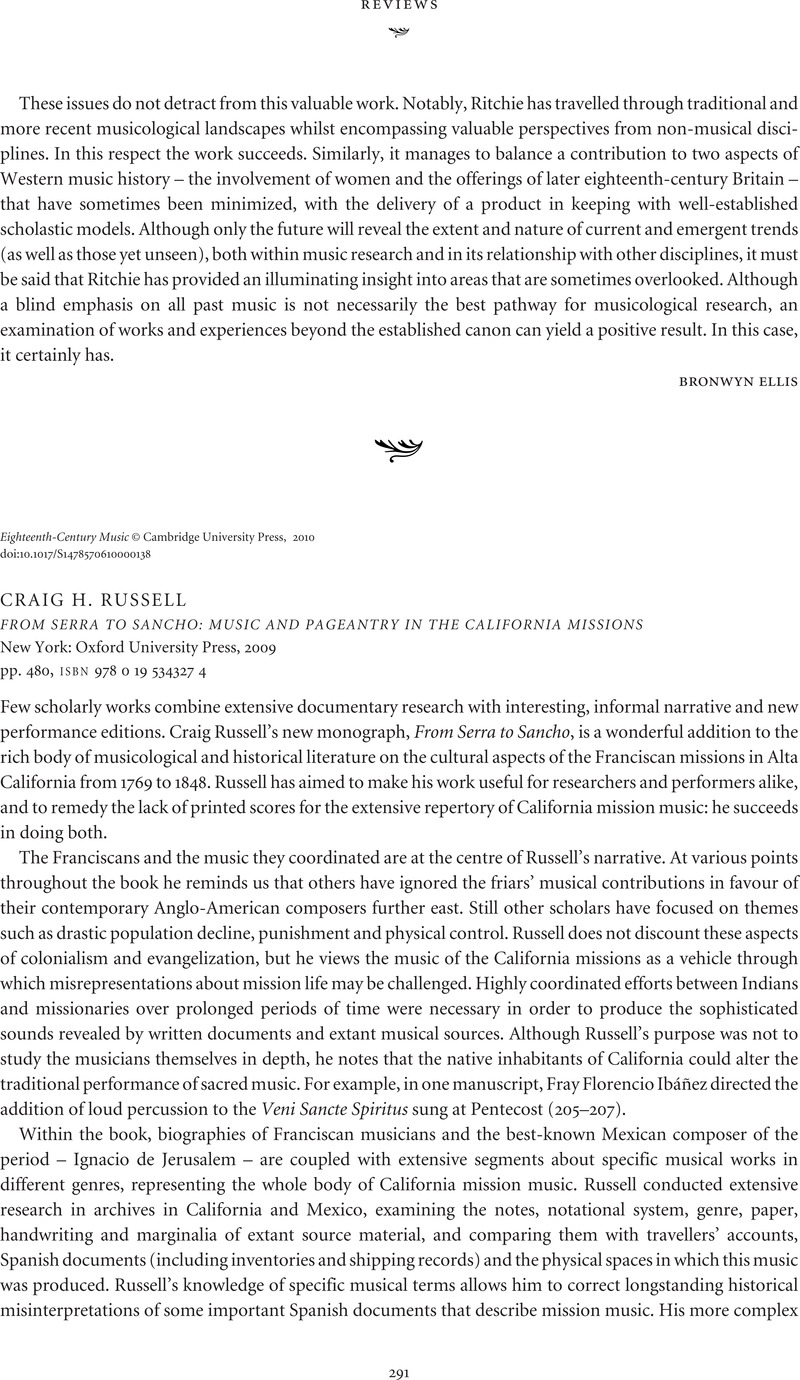No CrossRef data available.
Article contents
CRAIG H. RUSSELL FROM SERRA TO SANCHO: MUSIC AND PAGEANTRY IN THE CALIFORNIA MISSIONSNew York: Oxford University Press, 2009 pp. 480, isbn978 0 19 534327 4
Published online by Cambridge University Press: 30 July 2010
Abstract
An abstract is not available for this content so a preview has been provided. Please use the Get access link above for information on how to access this content.

- Type
- Reviews: Books
- Information
- Copyright
- Copyright © Cambridge University Press 2010




